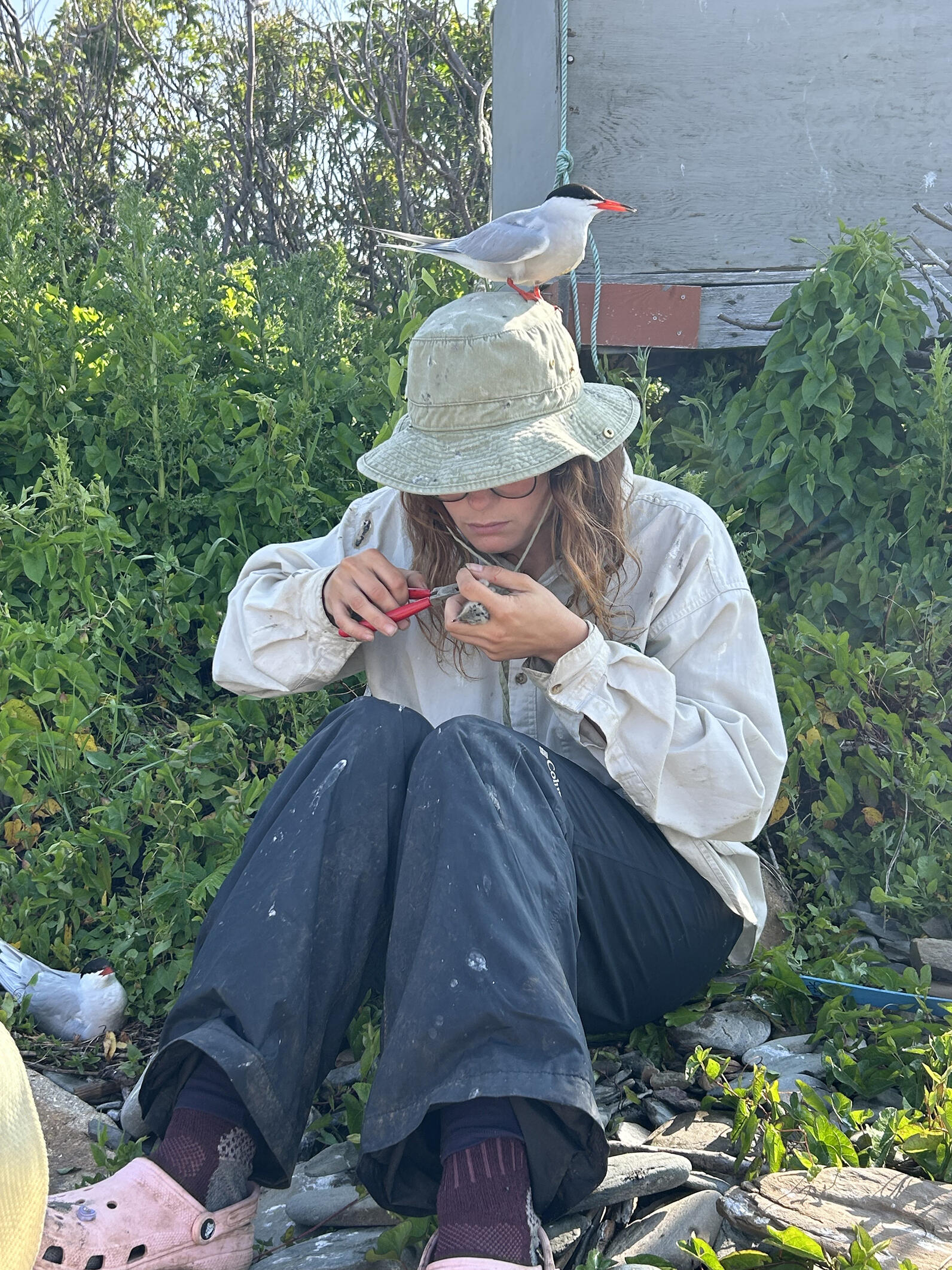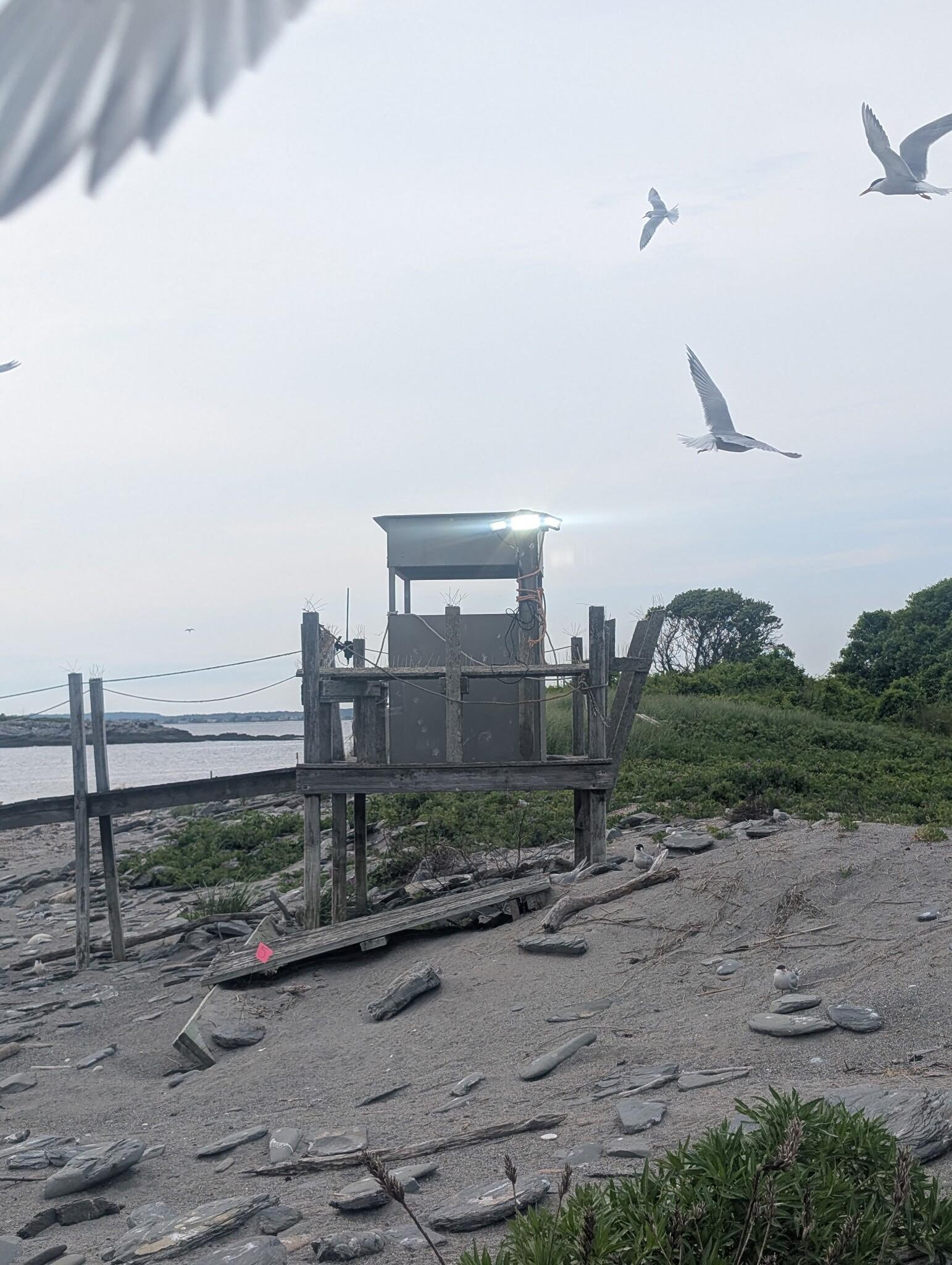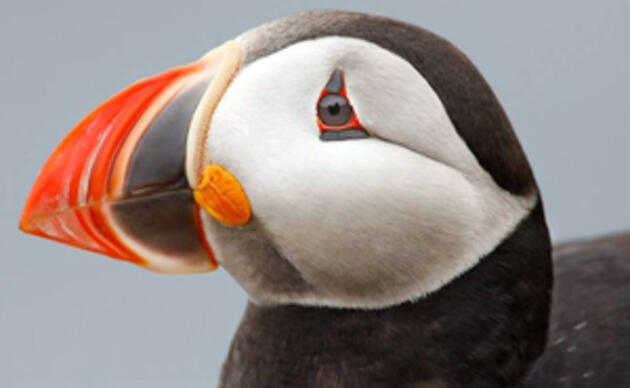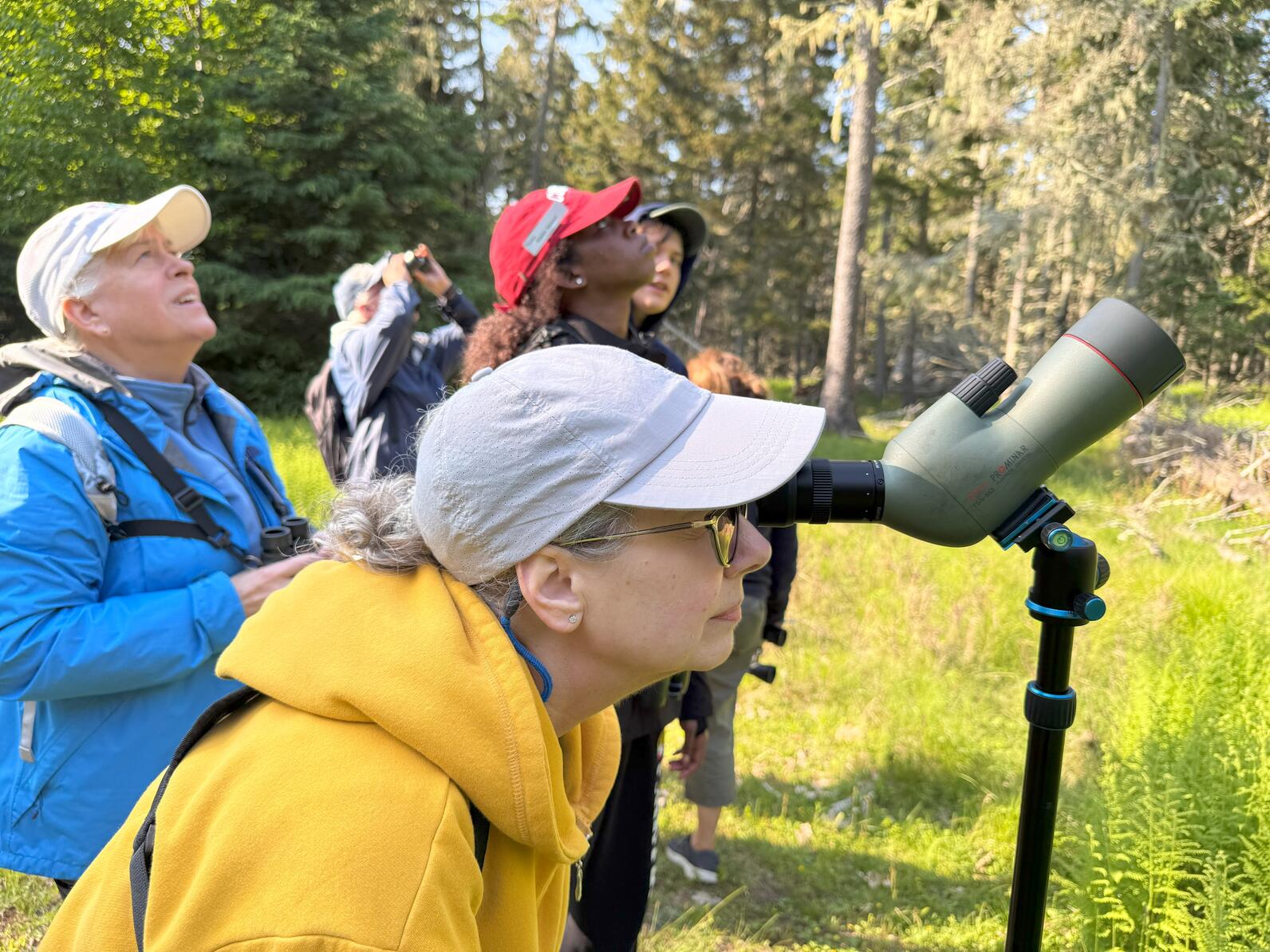
Hog Island Audubon Camp is in full swing, and June’s camps have been chock-full of memorable moments. This year’s Puffin Expedition and Coastal Maine Bird Studies for Teens camps allowed participants to land on Eastern Egg Rock to meet the research team and get a taste of what it’s like to live on a seabird island. Some campers were even lucky enough to catch a glimpse of Maine’s wayward Tufted Puffin and a Manx Shearwater! During Joy of Birding, participants visited mainland highlights like Burkett Mill and the Damariscotta Mills Fish Ladder to watch migrating Alewives and American Eels. Most recently, Field Ornithology participants landed on Colby College’s Allen Island and experienced a songbird banding demonstration with a Black-throated Green Warbler and a recaptured (previously banded) Common Yellowthroat.
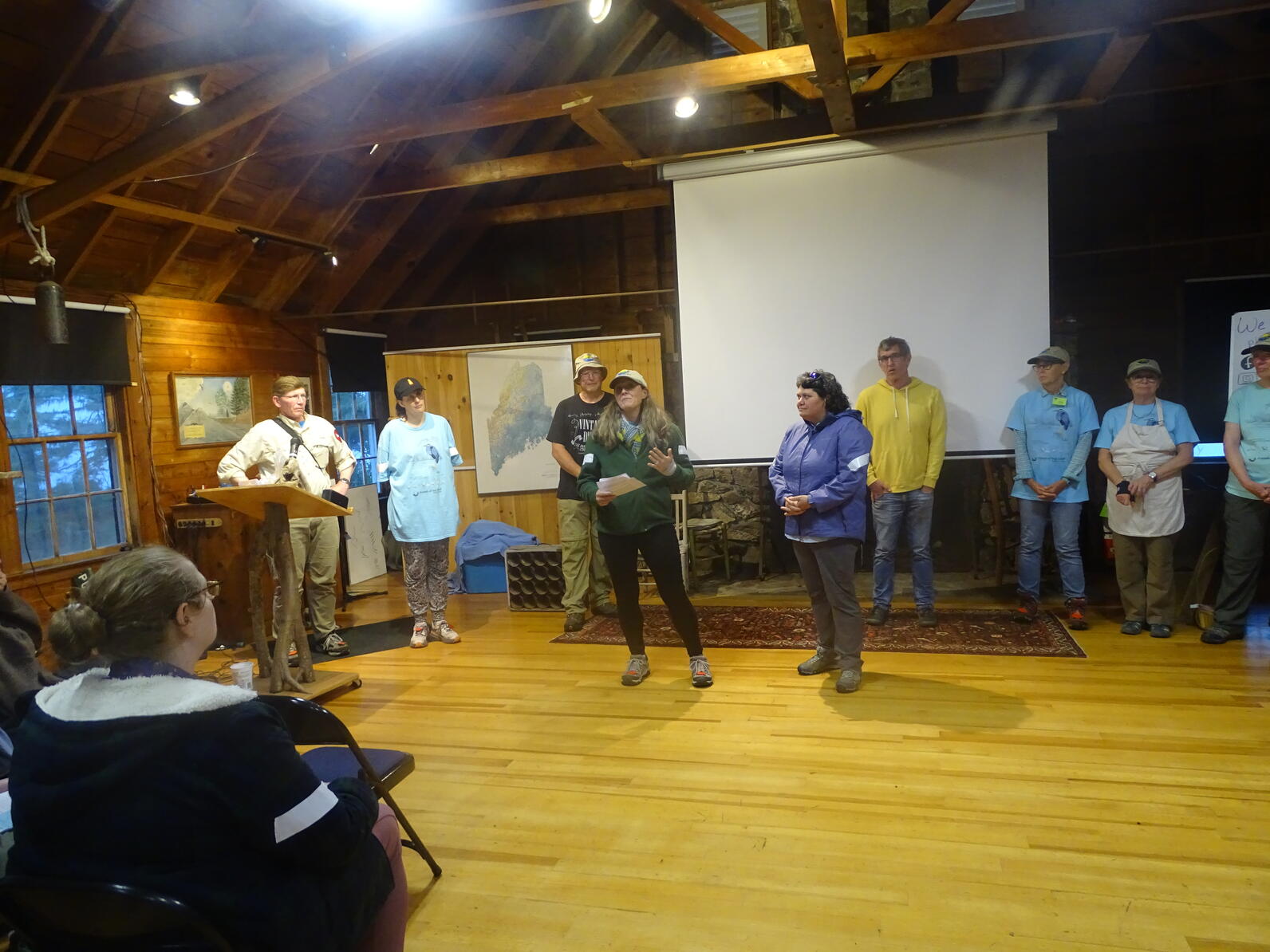
The Friends of Hog Island (FOHI) provide critical operational support to Hog Island Audubon Camp. Their smiling faces and helping hands assist with food preparation and serve each meal, move camper gear and luggage onto and off of the island, turn over rooms at the end of each week, and keep the island clean and tidy, all on a volunteer basis! On top of all this, FOHI raises funds for an annual gift to the camp. We’re grateful for the tremendous, ongoing support of the Friends of Hog Island and their dedication to sustaining the camp far into the future.
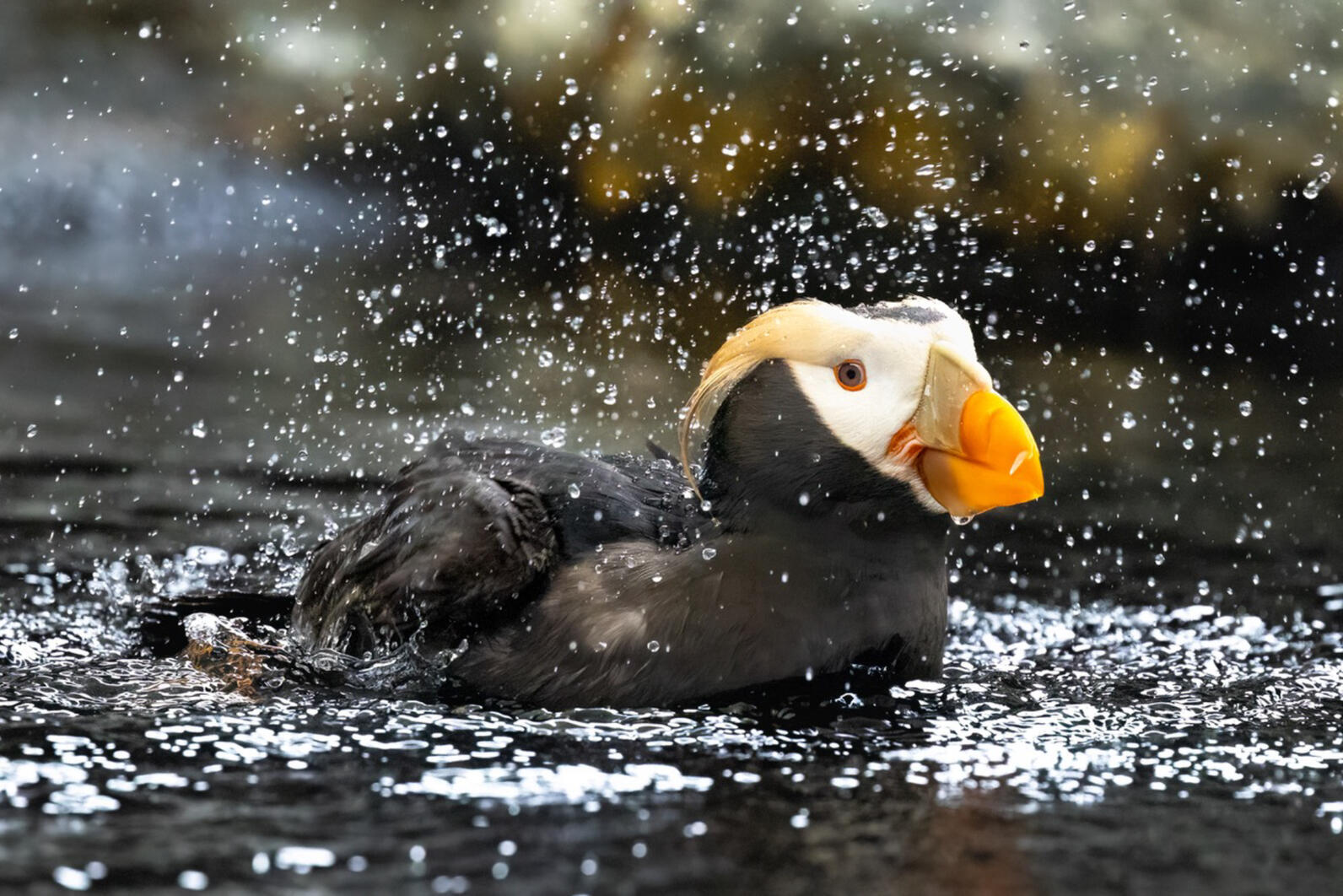
Conserving Oregon’s Tufted Puffins – A Collaborative Path Forward
Over the last century, the Tufted Puffin’s population along the U.S. west coast has experienced a significant decline. In the 1900s, breeding grounds from northern California up through British Columbia hosted tens of thousands of birds. However, in 2021, an Oregon coast-wide survey estimated that the Tufted Puffin population in Oregon was 553 individuals, down from nearly 5,000 in 1988 – an order of magnitude decline over the last 40 years.
To address this decline, a new Tufted Puffin Conservation Working Group with representation from the National Audubon Society’s Seabird Institute, Friends of Haystack Rock, Haystack Rock Awareness Program, Bird Alliance of Oregon, American Bird Conservancy, Shoreline Education for Awareness, Oregon Coast Aquarium, Oregon Department of Fish and Wildlife, Oregon State University, US Fish & Wildlife Service, and others worked together over the past 14 months to create Oregon’s first Conservation Action Plan for the Tufted Puffin.
The plan’s 10-year goal to ‘halt the decline’ is supported by five objectives: 1) Research; 2) Restoration & Management; 3) Policy Engagement; 4) Education and Outreach; and 5) Collaboration and Coordination. This new collaborative plan provides key players throughout Oregon with a comprehensive and coordinated path forward to protect active Tufted Puffin colonies; identify and reduce threats; and ultimately, to establish and maintain a viable, resilient TUPU population in Oregon. Stay tuned for updates as the Seabird Institute and partners begin to implement the plan this summer.
Island Highlights
